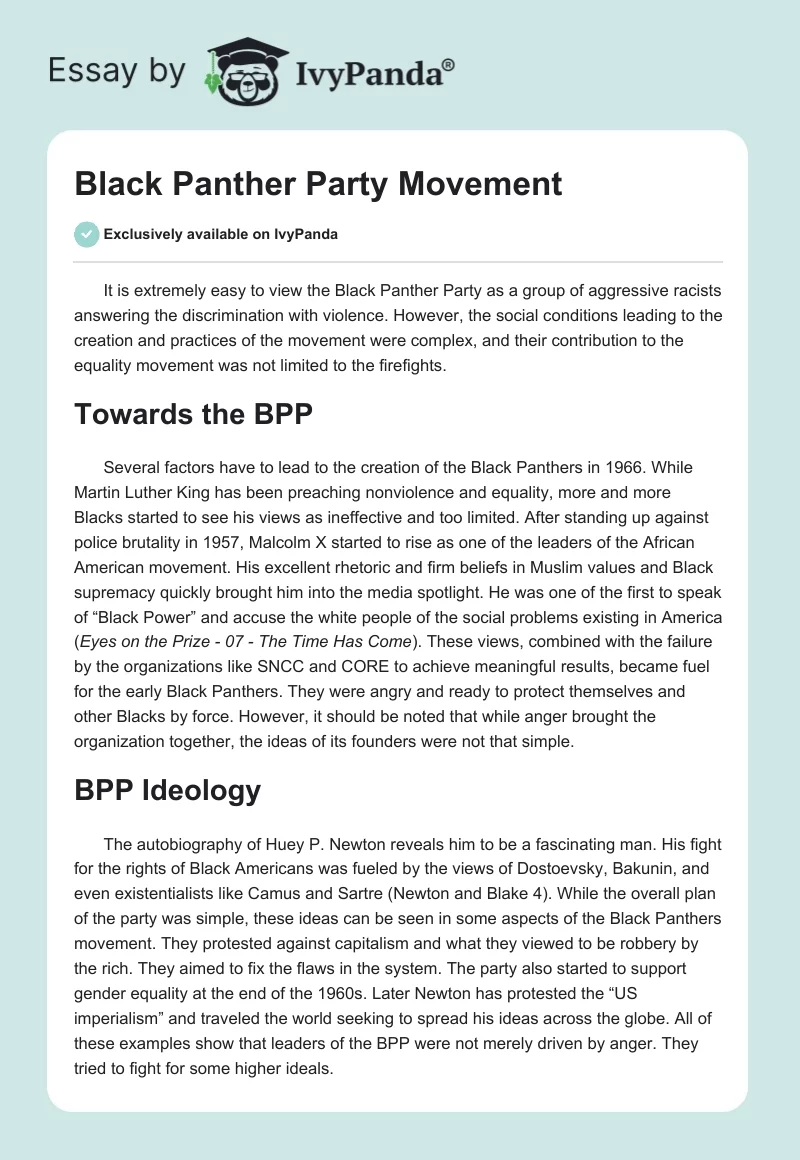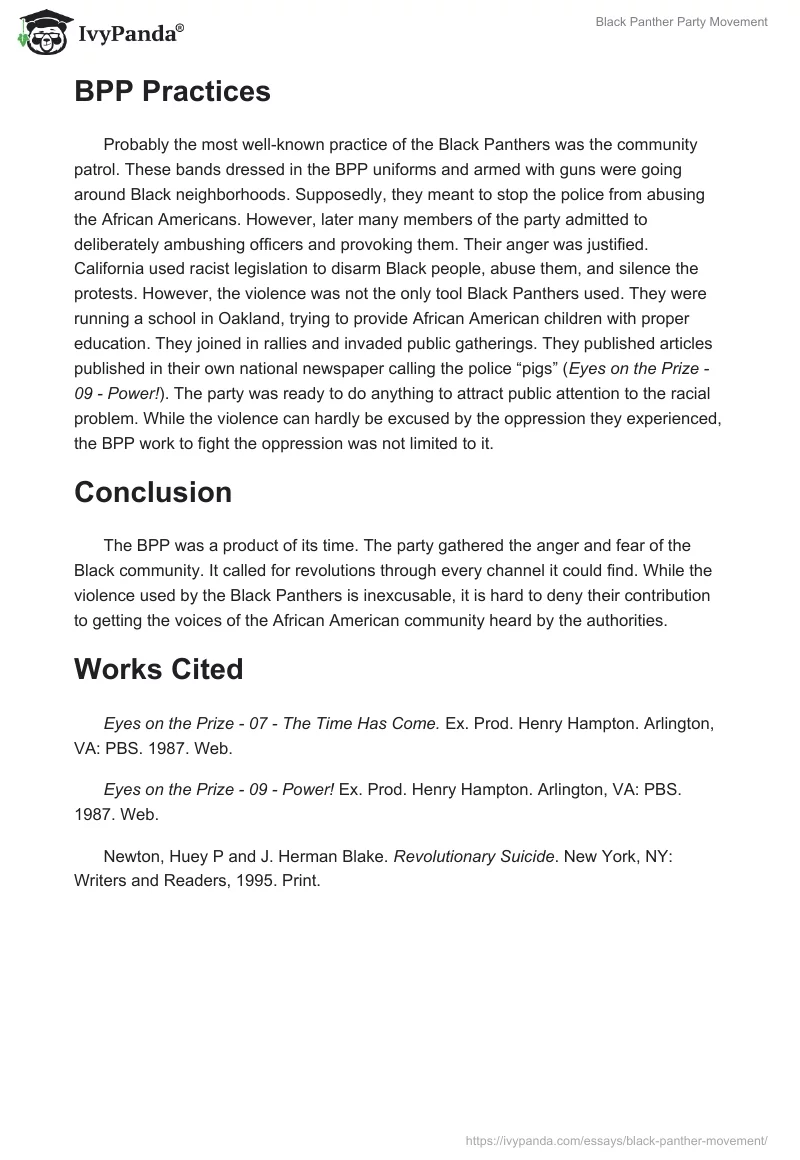It is extremely easy to view the Black Panther Party as a group of aggressive racists answering the discrimination with violence. However, the social conditions leading to the creation and practices of the movement were complex, and their contribution to the equality movement was not limited to the firefights.
Towards the BPP
Several factors have to lead to the creation of the Black Panthers in 1966. While Martin Luther King has been preaching nonviolence and equality, more and more Blacks started to see his views as ineffective and too limited. After standing up against police brutality in 1957, Malcolm X started to rise as one of the leaders of the African American movement. His excellent rhetoric and firm beliefs in Muslim values and Black supremacy quickly brought him into the media spotlight. He was one of the first to speak of “Black Power” and accuse the white people of the social problems existing in America (Eyes on the Prize – 07 – The Time Has Come). These views, combined with the failure by the organizations like SNCC and CORE to achieve meaningful results, became fuel for the early Black Panthers. They were angry and ready to protect themselves and other Blacks by force. However, it should be noted that while anger brought the organization together, the ideas of its founders were not that simple.
BPP Ideology
The autobiography of Huey P. Newton reveals him to be a fascinating man. His fight for the rights of Black Americans was fueled by the views of Dostoevsky, Bakunin, and even existentialists like Camus and Sartre (Newton and Blake 4). While the overall plan of the party was simple, these ideas can be seen in some aspects of the Black Panthers movement. They protested against capitalism and what they viewed to be robbery by the rich. They aimed to fix the flaws in the system. The party also started to support gender equality at the end of the 1960s. Later Newton has protested the “US imperialism” and traveled the world seeking to spread his ideas across the globe. All of these examples show that leaders of the BPP were not merely driven by anger. They tried to fight for some higher ideals.
BPP Practices
Probably the most well-known practice of the Black Panthers was the community patrol. These bands dressed in the BPP uniforms and armed with guns were going around Black neighborhoods. Supposedly, they meant to stop the police from abusing the African Americans. However, later many members of the party admitted to deliberately ambushing officers and provoking them. Their anger was justified. California used racist legislation to disarm Black people, abuse them, and silence the protests. However, the violence was not the only tool Black Panthers used. They were running a school in Oakland, trying to provide African American children with proper education. They joined in rallies and invaded public gatherings. They published articles published in their own national newspaper calling the police “pigs” (Eyes on the Prize – 09 – Power!). The party was ready to do anything to attract public attention to the racial problem. While the violence can hardly be excused by the oppression they experienced, the BPP work to fight the oppression was not limited to it.
Conclusion
The BPP was a product of its time. The party gathered the anger and fear of the Black community. It called for revolutions through every channel it could find. While the violence used by the Black Panthers is inexcusable, it is hard to deny their contribution to getting the voices of the African American community heard by the authorities.
Works Cited
Eyes on the Prize – 07 – The Time Has Come. Ex. Prod. Henry Hampton. Arlington, VA: PBS. 1987. Web.
Eyes on the Prize – 09 – Power! Ex. Prod. Henry Hampton. Arlington, VA: PBS. 1987. Web.
Newton, Huey P and J. Herman Blake. Revolutionary Suicide. New York, NY: Writers and Readers, 1995. Print.


